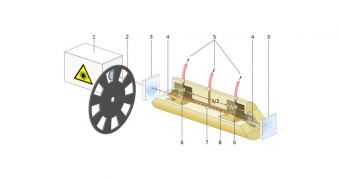Imaging cancer tumors buried deep within the body may have just gotten a lot easier. Experts announce the development of a medical investigations method that relies on both light and sound to capture images of these structures, with great precision.
The novel technology, called photoacoustic tomography, could soon be used to detect cancer in earlier stages than previously possible, when the tumors are a lot smaller than what current technologies can detect. However, this method is not yet fully developed.
In addition to being able to image smaller tumors, oncologists will also be able to use the new investigations method to keep track of how various cancer therapies are benefiting patients. In turn, this will bring the goal of personalized medicine closer to reality.
One of the most interesting capabilities the new imaging method has is producing high-detail, color models of tumors deep within the body, Science Blog reports. An added benefit is that the method does not require the use of radiations, such as X-ray and CT scans do.
Photoacoustic tomography will also be a lot cheaper to perform than Magnetic Resonance Imaging (MRI). At this point, the approach has not been tested in human clinical trials, but such investigations are being designed, and hopes are high that they will be successful.
“This technology is potentially a game changer, both in how we monitor cancer and in how soon we know it’s there,” explains Washington University in St. Louis biomedical engineer Lihong V. Wang, PhD, who was the leader of the development team.
The investigator is also affiliated with the Alvin J. Siteman Cancer Center at the Barnes-Jewish Hospital, and Washington University School of Medicine.
“Every issue of every top journal publishes exciting lab discoveries, but only a tiny fraction of them are ever translated into clinical practice. My hope is that photoacoustic tomography can help translate microscopic lab discoveries into macroscopic clinical practice,” he adds.
This approach was proven capable of observing one of the clearest indicators of cancer, hypermetabolism, earlier on than any other imaging method, in studies conducted on animals. Hypermetabolism is characterized by the excessive burning of oxygen within cells.

 14 DAY TRIAL //
14 DAY TRIAL //